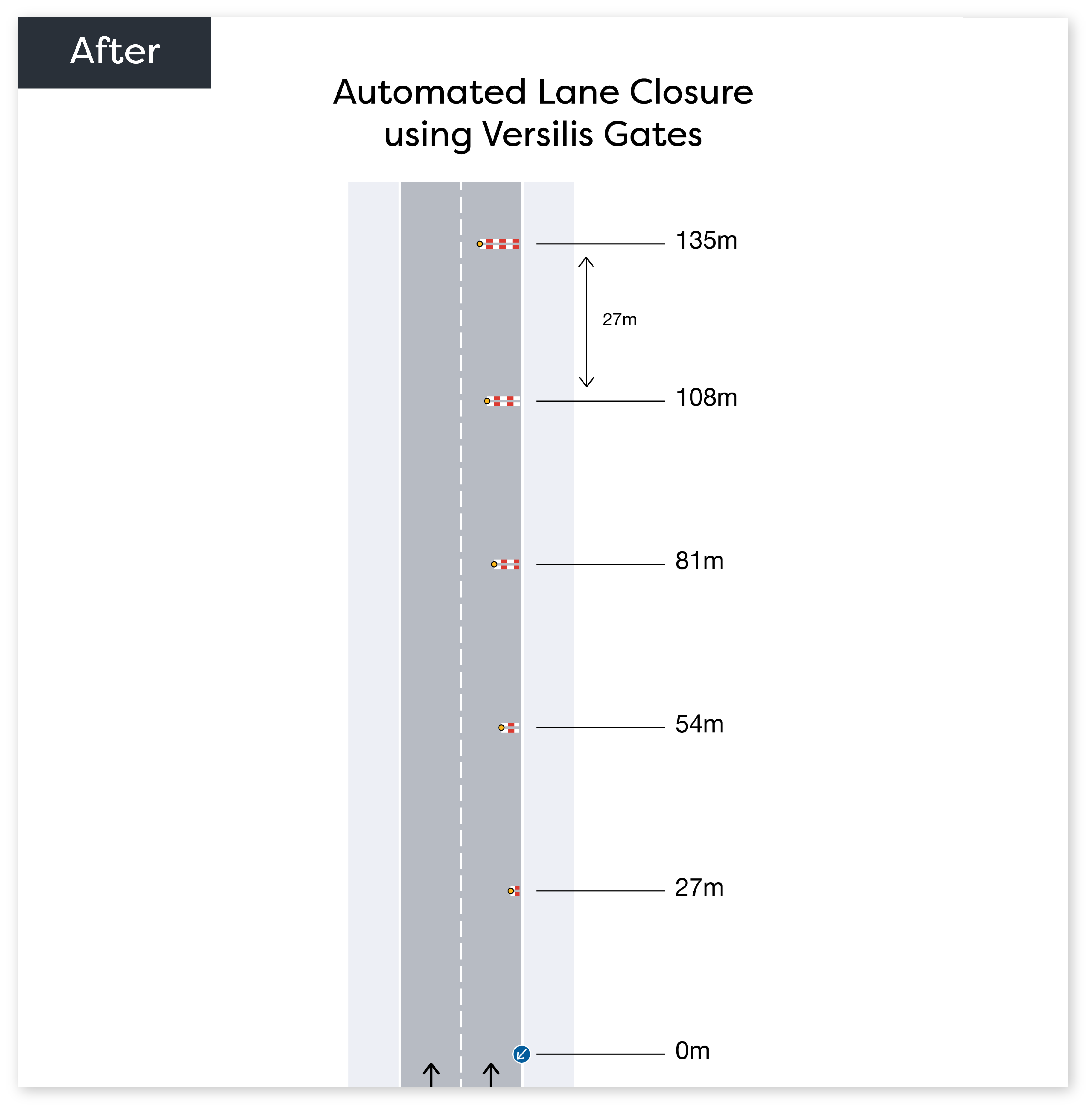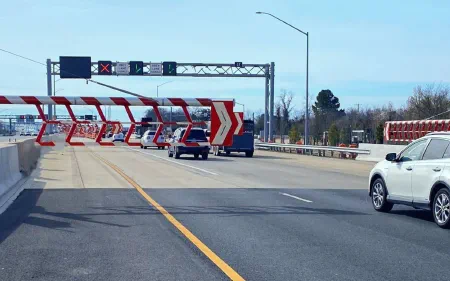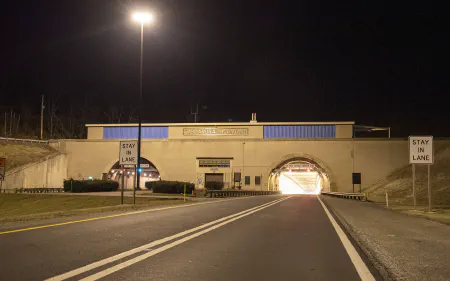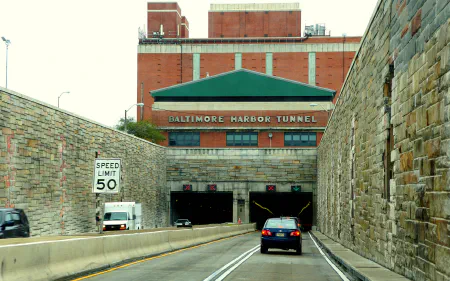Overview
The A3 Hindhead Tunnel is a 1.2-mile (1.83 km) twin-bored tunnel, located between London and Portsmouth, near Surrey, United Kingdom. Essential maintenance work at this tunnel requires repetitive lane closures. Manual lane closures were previously performed by road workers deploying traffic control equipment in live lanes. Versilis was selected by National Highways, in partnership with Kier and Highway Care, to implement an automated lane closure system on the north and southbound carriageways of the tunnel. Now, with use of Versilis products, two series of automated warning gates facilitate the lane shifts required as part of tunnel closure operations.
Project Scope
Versilis SwiftGate system is part of the UK’s first automated lane closure system deployment at the A3 Hindhead Tunnel. Tunnel operators use automated warning gates installed at both tunnel approaches to safely filter traffic out of the lane during planned maintenance closures and incidents. This new system improves road worker safety by removing the need to manually mark lane closures.
As well as avoiding the need for workers to manually set out tapers, the highly visible gates help prevent incursions, particularly at night when maintenance operations are performed. In 2019, there were 14 vehicle incursions into the Hindhead Tunnel during roadworks, which put the lives of roadway workers at risk. A lane closure can now be deployed in five minutes using Versilis’ Smart Handheld Controller, improving maintenance operational efficiency and reducing disruption for road users.










